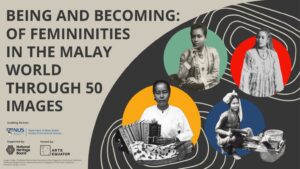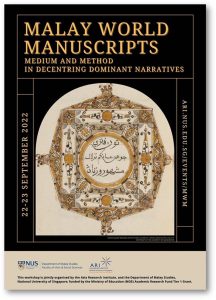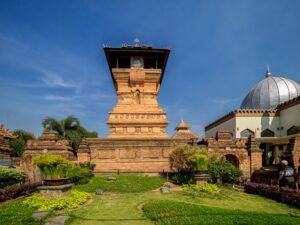Research Projects
PI: A/P Maznah Mohamad;
Co-Investigators: Dr Suriani Suratman, Dr Imran Tajudeen and Dr Bahar Gursel
This research seeks to appraise the value and role of pre-digital photographs as heritage, by studying how the intersectionality of gender, race and place has been visually depicted in Singapore’s history. The study will also explore the ways in which the representation of female Malay subjecthood is sometimes framed by architectural and spatial settings, which are often connected with perceived roles and positions of Malays in general and Malay women in particular. The masculinized colonial gaze serves as the ideological foundation of not only discursive portrayals but also of visualizations of the “Malay woman”, composed and captured through the camera. The subtext of the power of colonial photography was of male prowess fixated by the feminine subject. Here is where the photographer’s authority as the only legitimate interpreter of events and experience should not be left unquestioned, but in need of a deeper reading and interrogation to counter the monological perspective of national histories. Hence, a re-reading of photographs through this research will provide the necessary contexts for excavating the inaudible in history. One of the deliverables of the project is the curation of a virtual exhibition, drawing audience into a conversation around the exhibited photographs and their implications, especially on how the female body has been portrayed, objectified and subsequently, reclaimed for a new interpretation.
PI: A/P Sher Banu A. L. Khan
Co-PI: A/P Maznah Mohamad
The source and object of study - the Malay manuscripts – have been quite considerably studied before this, within the fields of literature, history, linguistics, philology and cultural studies. This project brings a different approach and perspective. Instead of considering the manuscript as the repository of authentic ‘indigeneity’, we interrogate the manuscript as a medium and method for ‘decolonizing knowledge’. The decoloniality of inquiry can be understood as a project for the decentering of epistemic narratives which have centred the epochal sway of imperialism, colonialism and nationalism (primarily European-driven) as the ‘singular dominant’ point in the historicization of ‘Asia' versus the rest, or of the Malay world, in comparison to other ‘worlds’.
As a starting point for exploring narratives that fall outside of the ‘singular dominant’ narrative, this research proposes to study texts which predate the modern era of imperialism, colonialism and nationalism. Manuscripts of the Malay world are one such textual material, defined as being handwritten and hand-decorated. They could be works of original compositions, translated from other languages or copied from other sources. The handwritten feature of manuscripts meant that they were produced before the coming of printing technology into the region around the seventeenth century. Malay manuscripts thus form an important corpus of pre-imperial, pre-colonial and pre-national repository of knowledge production and representation. We propose to utilize Malay manuscripts as a valuable archival resource in the search for medium and method in the project of decentering dominant narratives in knowledge production within the social sciences.
Exploring Malay texts will uncover an alternative paradigm that gives the longue durée perspective of social processes. This will lead coloniality and its effects to be placed in a more multi-layered, interconnected and circulatory time frame and an ‘other’ paradigm where new meaningful categories, new imaginaries, new methodologies will be discovered. The method of inter-referencing and multiplying frames of reference without placing Europe and coloniality at the center allows for many other agents to be recognized as the significant and interconnecting points of reference. To decenter and to move away from the ‘singular dominant’ frame of capturing the social meaning of human existence often recognised to be Eurocentric in nature is a major aim of this project. The Malay world before colonialism was not parochial or ‘local’ but one that was already connected to the other power centers such as in China, India, Middle East and Eurasia before the rise of Europe.
The ‘manuscript’ will straddle both medium and method in this research as it is a multiple site of meaning-making. Textualism as a tool for reading and re-reading the manuscripts will be the approach used. Related to this is the method of intertextuality or the process of deconstructive reading, in which the text and its textuality can be read as the intersection of many social processes. This method allows the research to postulation the circulatory assemblages, connections and intersections of relations within the Malay Archipelago and beyond. Philology is another method towards the study of texts, where relationships between language and historical circumstances of the texts are studied. This method allows the research to identify the contexts of the texts in terms of their periodization, authorship, and social and political circumstances around their production. Texts and contexts is another method where manuscripts triangulated or corroborated with other contemporary sources help reveal or reconstruct societies from which manuscripts were produced. Manuscripts will also be considered as a ‘social thing’ with a biographical story of mobilities and circulation. Old manuscripts are material artifacts, with a history of ‘travelling’ and of ‘utility’ and ‘function’. The method for tracing this will combine both historical and ethnographic study of how manuscripts and their meanings have been used within contemporary political and cultural discourse.
The outcome of the research will be the recognition of new global relationships and cross-cultural borrowings where circulation, connectivity, interactivity and interdependency of knowledge production is key. Understanding the past through decolonizing genealogies will enable a more complete understanding of how future trajectories on issues of power, inequality and conflicts might be projected. This research will advance the study of manuscripts as a new epistemic source in the redefinition of social, ecological and cosmological life within the fields of historiography and the sociology of knowledge, as well as reinvigorate the relevance of Area Studies in contemporary times, where state-centrism and nation-state borders are being contested.
This project examines how first-generation Muslim immigrants adapt in Western environments through the case study of Singaporean Malay-Muslim communities in three carefully selected cities of Australia: Melbourne, Brisbane and Sydney. The research interrogates and extends the current literature on adaptation strategies of Muslim immigrants in the West, particularly in the light of the September 11 attacks in New York City which unleashed the rise of Islamophobia, anti-immigrant sentiments and the preponderant view of Muslims as a “suspect” and “problem community”.
This research project seeks to investigate and address the following questions:
- What are some of the complex formal and conceptual translations and syntheses found in Southeast Asian architecture?
- How have these complex formations been addressed in existing scholarship?
- What do these complex formations tell us about the frameworks in architectural historiography in the different disciplinary categories? Do the different frameworks form any synchrony?
- How does the study of Southeast Asian examples inform larger debates and theoretical discussions on the vernacular and the colonial in architecture and urban traditions, and the scholarship from different disciplines that study Indic and Islamic architecture?
PI: Dr Imran bin Tajudeen
[Cerita Kita] Peranakan Singapura: Town Malays in Colonial Singapore and their Forgotten Clubs by Malay Heritage Centre
PI: A/P Sher Banu A. L. Khan
Co-Investigator: Mr Abbas Khan
This research fills a gap in our understanding of Singapore’s rich and cosmopolitan ethnic heritage and how each community has contributed to Singapore’s development. The term “Pakistani” itself needs to be problematized and deconstructed. The “Pakistanis” are a heterogeneous group consisting of Pathans, Hazaris and Punjabis, each with their own language and customary practices. For example, there are Pathans who speak only Pashto, others speak Pashto and Urdhu and there are Malayized-Pathans who speak only Malay. This research seeks to examine how these different sub-ethnic groups understand and construct their identity at the personal, community and national level. Sections of the “Pakistani” population in Singapore have inter-married with other Muslim ethnic groups, such as the Malays, Javanese and Indian Muslims, giving rise to an interesting hybrid community of “Pakistani-Peranakans” with a culturally rich heritage. These “Pakistani-Peranakans” form a complex mix of ethnicities that defy the traditional ‘racial’ categories inherited from colonial Britain and recognised in independent Singapore. As such, many “Pakistanis” in Singapore see themselves check-boxed under the ubiquitous ‘Others’ category. The predominance of inter-marriages between “Pakistanis” and other Muslim groups in Singapore for the past hundred years constitutes an important subject of study to further our understanding about social integration and cohesion. This research intends to interrogate the community’s strategies of exclusion and inclusion, the politics of integration and differentiation to discover how they attempt to maintain their own sub-ethnic identity within the “Pakistani” community and within the larger “Pakistani-Peranakans” community in the context of a globalised Singapore.


